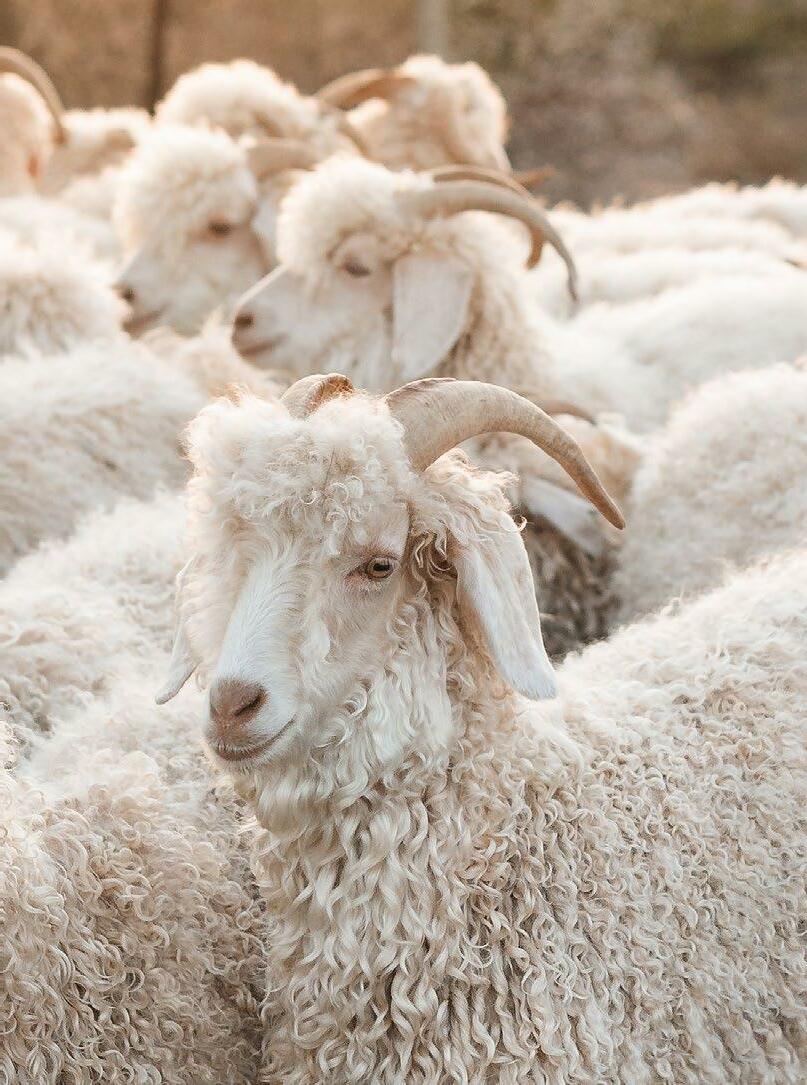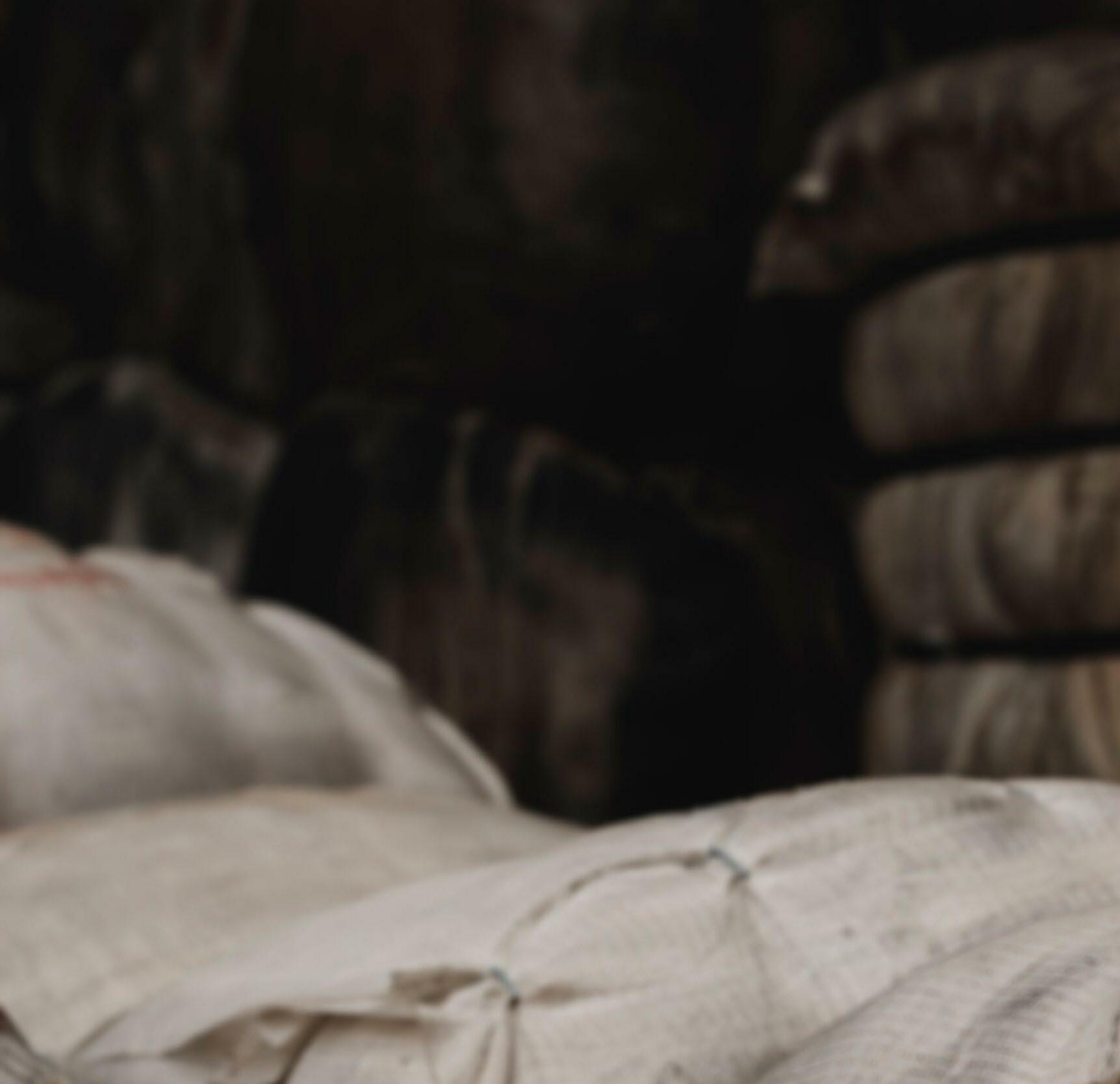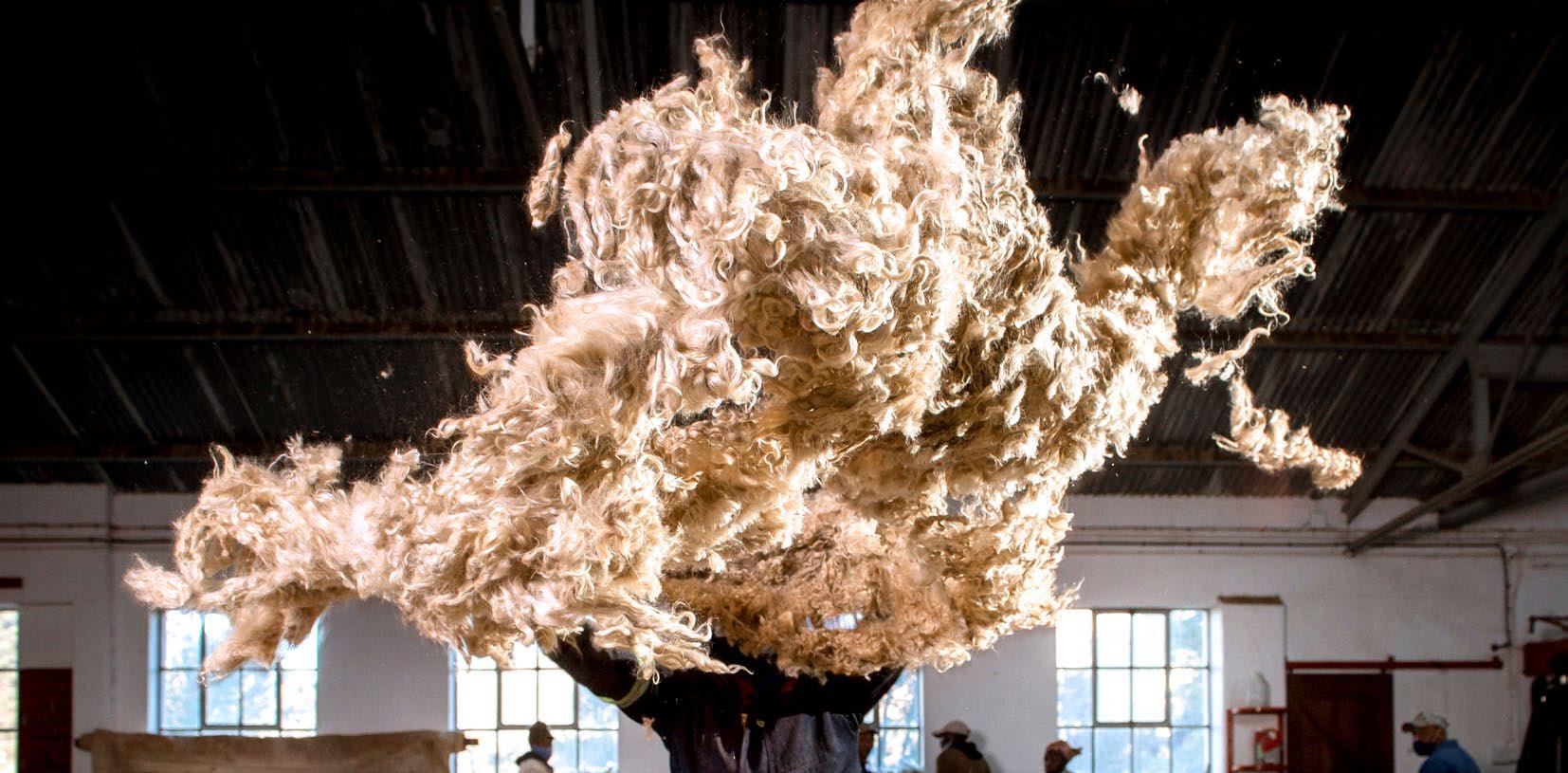MOHAIR STORY
OUR SUSTAINABILITY JOURNEY


MOHAIR SOUTH AFRICA

THE STORY
OF THE NOBLE FIBRE
The founding of the mohair industry in South Africa was a stroke of good fortune after the Sultan of Turkey gifted 12 infertile Angora rams and one ewe to South Africa in 1838.
Unbeknown to the Sultan, the ewe was pregnant and gave birth to a ram kid en route, establishing the Angora goat breeding stock in South Africa.
These beautiful and gentle animals found their way to the Karoo region of South Africa in the Eastern Cape, which has become home to the Angora goat.
Mohair, known worldwide as the noble fbre, is sought after for its exclusive qualities such as lustre, resilience and colour retention, which have been the key to its success.
The South African mohair industry has grown into the global leader, producing the world’s best quality mohair.




SUPPORTING COMMUNITIES
HANDS ON APPROACH AND DEDICATION

The added beauty of mohair is that it is a renewable, natural resource committed to a sustainable production chain between animals and humans, while contributing to the long-term prosperity of the Karoo region.
The production of mohair supports approximately 30 000 people, many of whom live in the Karoo and work hands-on with the goats.
Around 50% of the world’s mohair comes from the Karoo region in South Africa. The journey from goat to finished product requires passion, dedication and a hands-on approach.
SUSTAINABILITY
THE JOURNEY AND PARTNERSHIP

Angora goats thrive in the Karoo, with its combination of hot, dry summers, cold winters and semi-desert vegetation. This merging of best practice farming and a prime environment for Angora goats has set South Africa apart.
With sustainability being of crucial importance to the industry, Mohair South Africa (MSA) has taken its role as a global nonprofit organisation committed to the responsible and ethical production of mohair in the country seriously.
CARING FOR ANGORA GOATS
RESPECT FOR ANIMAL WELFARE
Angora goats are shorn twice a year under strict standard requirements, ensuring special care is taken and that the goats are not harmed or get sick from the practice.




SHEARING
Shearing is essential to the animal’s wellbeing and if not shorn regularly, they are susceptible to parasites and illnesses. Hair left to grow impairs the goat’s vision and movement, which could prevent them from eating and drinking, and it also prevents the kids from suckling.
SHELTER & WELLBEING
After shearing the farmers provide shelter for goats to protect them from the elements. Angora goat farmers depend on the health and wellbeing of their goats to produce quality mohair, so care and dedication is paramount to the sustainability of the animals and their fbre. Their feece has been refned through consistently high breeding standards and meticulous genetic selection in the pursuit of perfection.
DIPPING
To protect Angora goats against parasites, they are washed and occasionally dipped in swim-through tanks. This enables the specially formulated solutions to treat all the hard-reach areas like under the tail and inside the ears. Strict legislation ensures no harmful agents are present in the dipping of Angora goats.
The goats swim through the water, rinsing the soapy mixture from their feece. Goats are natural swimmers and there is always a trained handler present to guide them through. They are usually dipped in summer when a cooling dip is welcomed and the feece can dry quickly in the sun.








THE RESPONSIBLE MOHAIR STANDARD
The RMS, launched on March 17, 2020, aims to provide the industry with the tools to recognise farmers’ best practices and to ensure that mohair comes from farms with an advanced approach to land management, animal welfare and social responsibility.

Beyond the farm, it also aims to provide a traceability system throughout the entire value chain – from the farm to the fnished product. The RMS continues to see widespread adoption among growers, manufacturers and brands alike. It is exciting to see a growing number of manufacturers and brands fast embracing the RMS and registering with the standard. Many companies worldwide have been RMS/RWS/RAS-certifed post farmgate, including companies throughout the mohair value chain that enable RMS mohair to reach the end consumer.
Adding to the international adoption of the RMS, at a production level Textile Exchange has launched a herding pilot project applicable to some of the international mohair-producing countries.
Producing mohair ethically and sustainably is non-negotiable for the South African mohair industry and the roll-out of the RMS remains a priority.



TRACEABILITY
ORITAIN PARTNERSHIPWith its commitment to sustainability and ensuring the highest levels of social and ethical production, as well as traceability, Mohair SA partnered with Oritain, a world leader in using forensic science to verify the origin of products and raw materials.

Oritain uses a combination of forensic science and technology to analyse mohair fibre and to verify its origin. This gives manufacturers, brands and consumers peace of mind of the content in their mohair purchases.

This enhanced traceability is robust and helps to underpin wider product claims relating to sustainable and ethical production.

Mohair South Africa believes that shared knowledge, a vigorous commitment to continuous improvement and progressive, ethical and sustainable attitudes play a vital role in the success of the mohair industry. It is imperative that the industry acknowledges and encourages the advancement of mohair as a fully traceable natural fbre.
With transparency being of key importance, the technology Oritain ofers will enhance the industry’s future in sustainable sourcing. MSA’s partnership with Oritain aligns with the progressive uptake of the RMS that was launched in March, 2020.
Mohair SA believes that sustainability is a journey and taking our environment, animals and people into consideration is the number one priority. Oritain ofers a fully operational ft-for-purpose database for South African mohair, which will be available to brands and retailers on request.
1. The product naturally absorbs different levels of chemical elements and isotopes. This gives the product its unique origin fingerprint.
2. Samples of the genuine product are collected and analyzed to identify the origin fingerprint
3. We store the fingerprint in the Oritain database

06. On-pack certification and marketing opportunities can be leveraged for consumers peace of mind.

5. Products from the markets are tested to verify the claimed origin of the product.
4. Samples from the market are collected for testing
S13C S2H Li Al Pb Cs Rb SrREGENERATIVE AGRICULTURE

Mohair SA is committed to addressing the rapidly growing demand for fibres from regenerative sources. The industry is keenly aware of the increased interest in this aspect of fibre production. Regenerative agriculture has become a topic on everyone’s lips, with many brands and retailers across the globe looking to source fibres and raw materials from farms that use a progressive approach to holistic farm management practices.
Such practices are essential as they help to revitalise the soil, capture carbon emissions and increase carbon food security while storing water.
MSA supports the drive to highlight the positive impact of regenerative practices on mohair-producing properties. As the industry body, MSA would act as a facilitator to support regenerative agriculture as we have done for the RMS. We encourage producers to participate in the field, create educational tools and help the overall drive towards regenerative agriculture.
EDUCATION AND TRAINING

The South African Mohair Growers’ Association (SAMGA) and the Mohair Empowerment Trust (MET) host training days and workshops for farmers and farm workers, educating them on Angora goat handling and health. The mohair industry employs a dedicated vet, Dr Mackie Hobson, who assists in these training days and is always available to our producers who require veterinary support.
With the help of Dr Mackie Hobson, best practice guidelines were developed for Angora Goat Health Management training purposes in the form of manuals and videos. These manuals have been translated into four commonly spoken languages in the mohair industry.
THE
MOHAIR EMPOWERMENT TRUST

MSA works closely with the Mohair Empowerment Trust (MET) to assist emerging farmers in developing successful and sustainable Angora goat farming initiatives. The MET is a non-proft organisation established in 2010. The mohair industry saw a need to focus on uplifting and partnering with emerging South African farmers who showed potential to help them succeed in the mohair farming industry.
The Trust’s primary objective is to provide skills development, support, mentorship and assistance to these emerging farmers to establish and manage their own agricultural operations. Working with MSA, the Trust guides these farmers, helping them to achieve their goals while simultaneously increasing mohair production. It has projects spread throughout the mohair farming district.
For more information: Website: www.mohairempower.co.za
Email: beauty@mohair.co.za





MOHAIR CHARACTERISTICS
MOHAIR, A VERSATILE AND LUXURIOUS FIBRE

LUSTRE
Mohair’s natural lustre gives garments a silky sheen. It’s the ideal garment to wear, day or night.
CLIMATE CONTROL
Mohair breathes naturally, absorbing and releasing atmospheric moisture and controlling its own “climate” to ensure optimal comfort.
LIGHTWEIGHT
Mohair fabric is luxuriously lightweight and renowned for its versatility, staying cool in summer and warm in winter.
NON-FLAMMABLE
Mohair is virtually non-flammable, keeping you safe and chic all year round.







CREASE-RESISTANT
Products made from mohair have an innate elasticity, which ensures that they hold their shape and do not crease.
DURABILITY
Due to its pliability, mohair is rated as one of the world’s most durable fbres.
DYE AFFINITY
Mohair responds magnificently to dyes, retaining even the most brilliant colours over time.
PROCESS
FARM TO FASHION


SHEARING
The mohair feece is clipped from the Angora goat, twice a year, either by hand or with electric shears. The animals are handled carefully and protocols are in place to ensure the goats are treated ethically.
CLASSING
The mohair is sorted into various lengths, fibre diameter and quality types. Meticulous classing adds value to the product and it is classed in terms of fineness, from super fine mohair to strong mohair.
SCOURING
This is washing the mohair to remove excess dirt and oils.





CARDING
The mohair fibres are positioned in uniform lengths and most of the vegetable matter is removed. A sliver or coil of mohair, called a carded sliver, is produced.
COMBING
The remaining vegetable matter and shorter, irregular sized fibres are removed from the carded sliver to transform the mohair into a soft, luxurious mohair “top”.
SPINNING
This is converting the mohair top into yarn. The top is spun into a yarn specified for structure, thickness (yarn count) and surface. Mohair yarns are often twisted or brushed (raised) for a fluffy appearance.
THE

END PRODUCT
DYEING
Products can be dyed after combing, spinning or weaving.
WEAVING
Yarn is used to manufacture worsted (suiting fabric) or woven cloth.
KNITTING
Yarn is machine knitted into panels for garment production. Hand knitting yarn is sold as balls or skeins, which are available in an array of colours, textures and blends.
THE
MOHAIR MARK
THE SYMBOL OF ULTIMATE LUXURY

The Mohair Mark was developed to help consumers select products that contain only the highest quality natural fbre.
The display of the Mohair Mark is a commitment to excellence and it is a symbol of authenticity and luxury that should be treated with respect and worn with pride. To fnd out more on how Mohair South Africa can help you apply to use the Mohair Mark on your mohair products, please contact us at:
info@mohair.co.za










